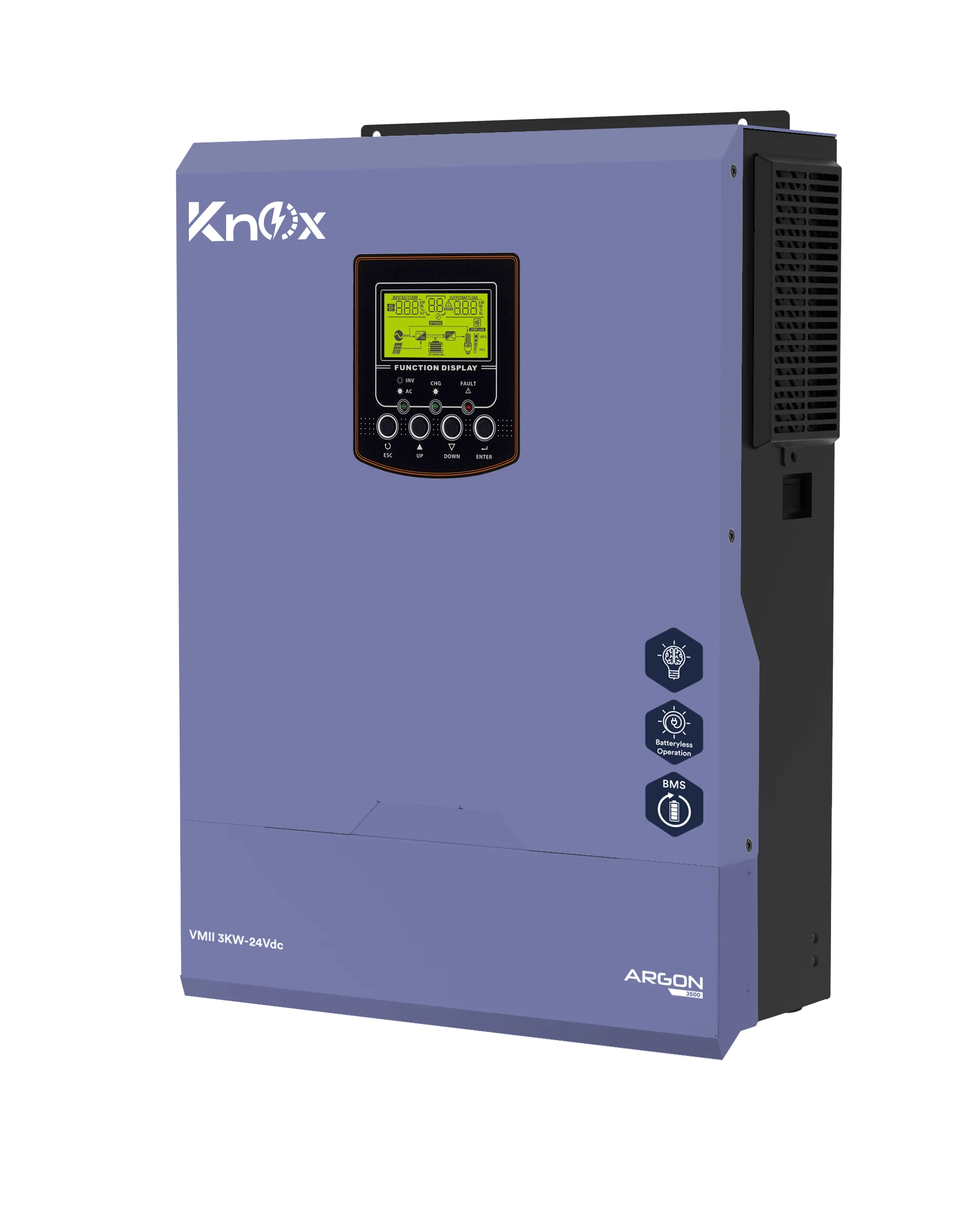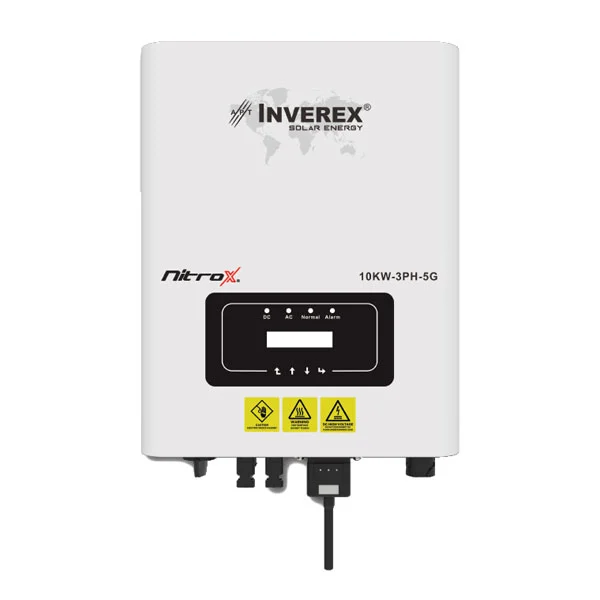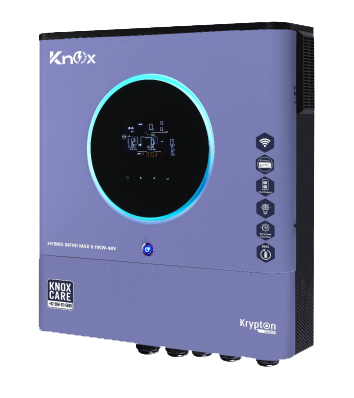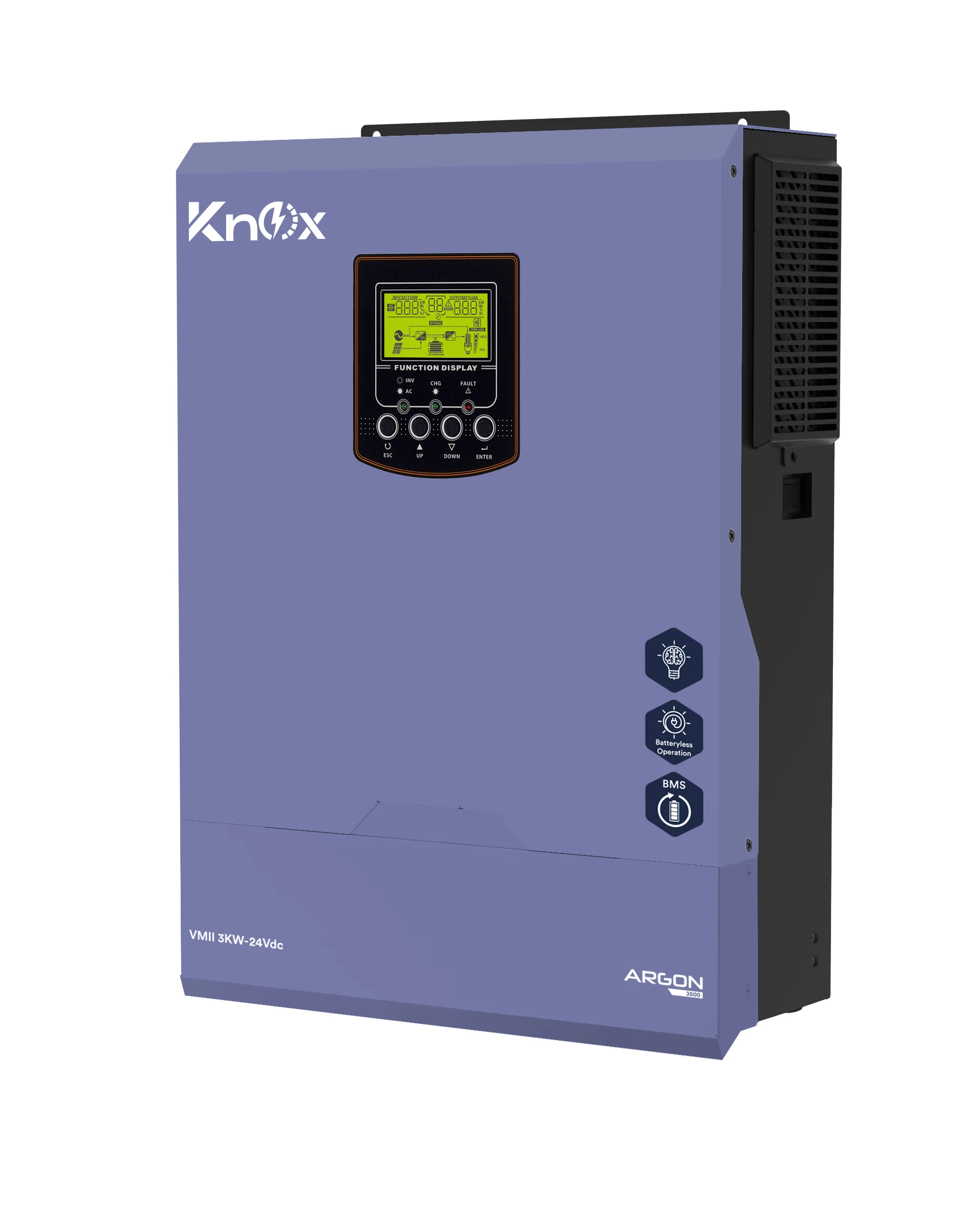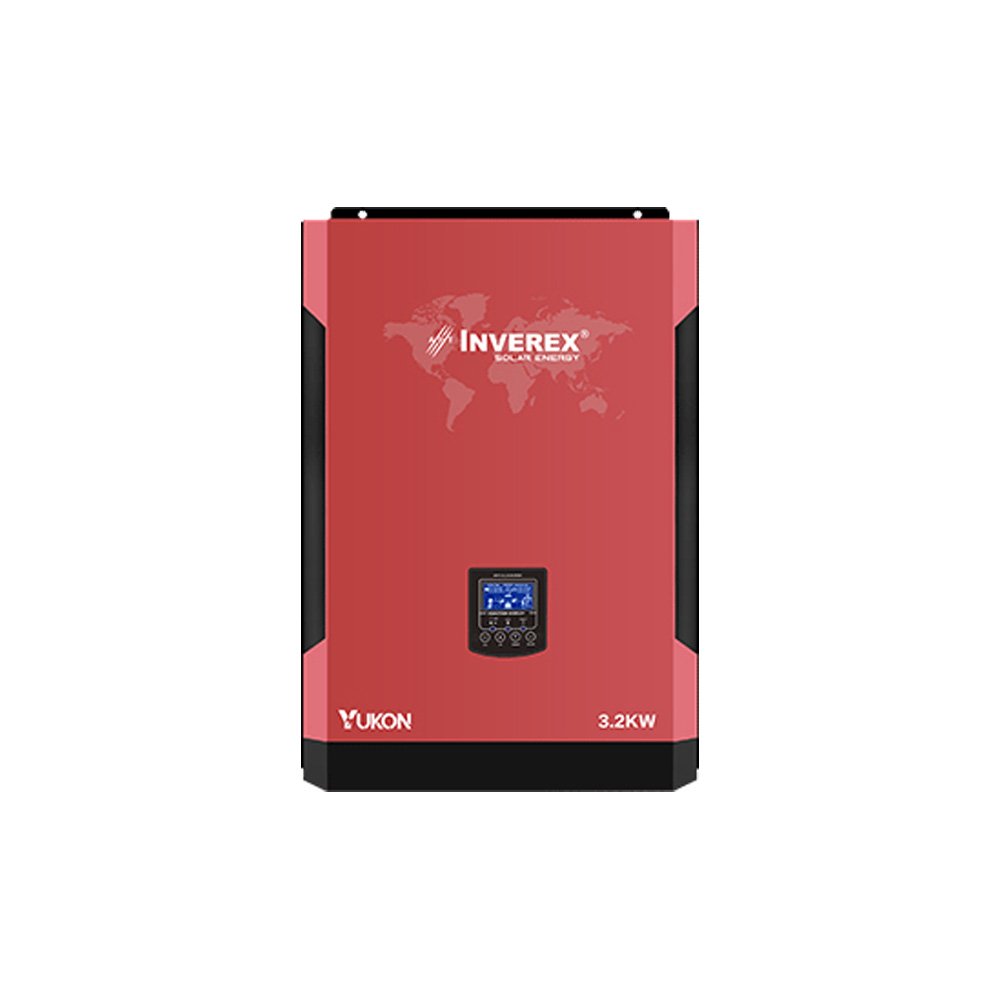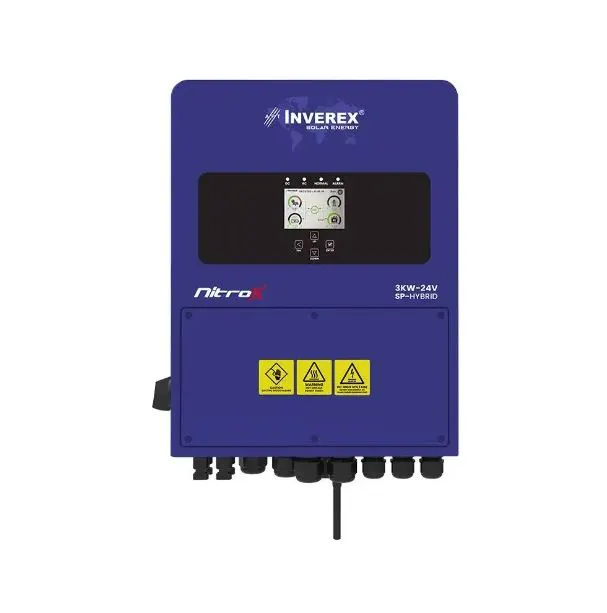The Most Popular Solar Inverter Price in Pakistan: Overview, Working, and Advantages
The selection of power converters is crucial for optimal performance in solar photovoltaic systems. Advancements in power electronics have addressed the utility and load requirements of low-voltage, non-linear, and environmentally sensitive power sources. Researchers have created inverter topologies that are one of a kind.
These topologies have features like built-in boost, isolation, high efficiency, power decoupling, and dual grounding, the ability to convert solar power into electricity in a single step, a small size, and better power quality. The cost of inverters depends on their quality and brand. Here are the most well-known solar inverter price in Pakistan.
Latest Solar Inverter Price in Pakistan 2024
Solar inverters are considered as the brain of Solar power systems. Here is the list of available solar inverters in the Pakistan with price.

Knox Xenon 16000 IP65 – 12kW Hybrid Solar Inverter
Price - 176,000 ₨

Ziewnic Z5 – PV 6500 – 4.5kw Hybrid Solar Inverter
Price - 165,000 ₨

Max Power Suntronic – 10kw Hybrid Solar Inverter
Price - 355,000 ₨
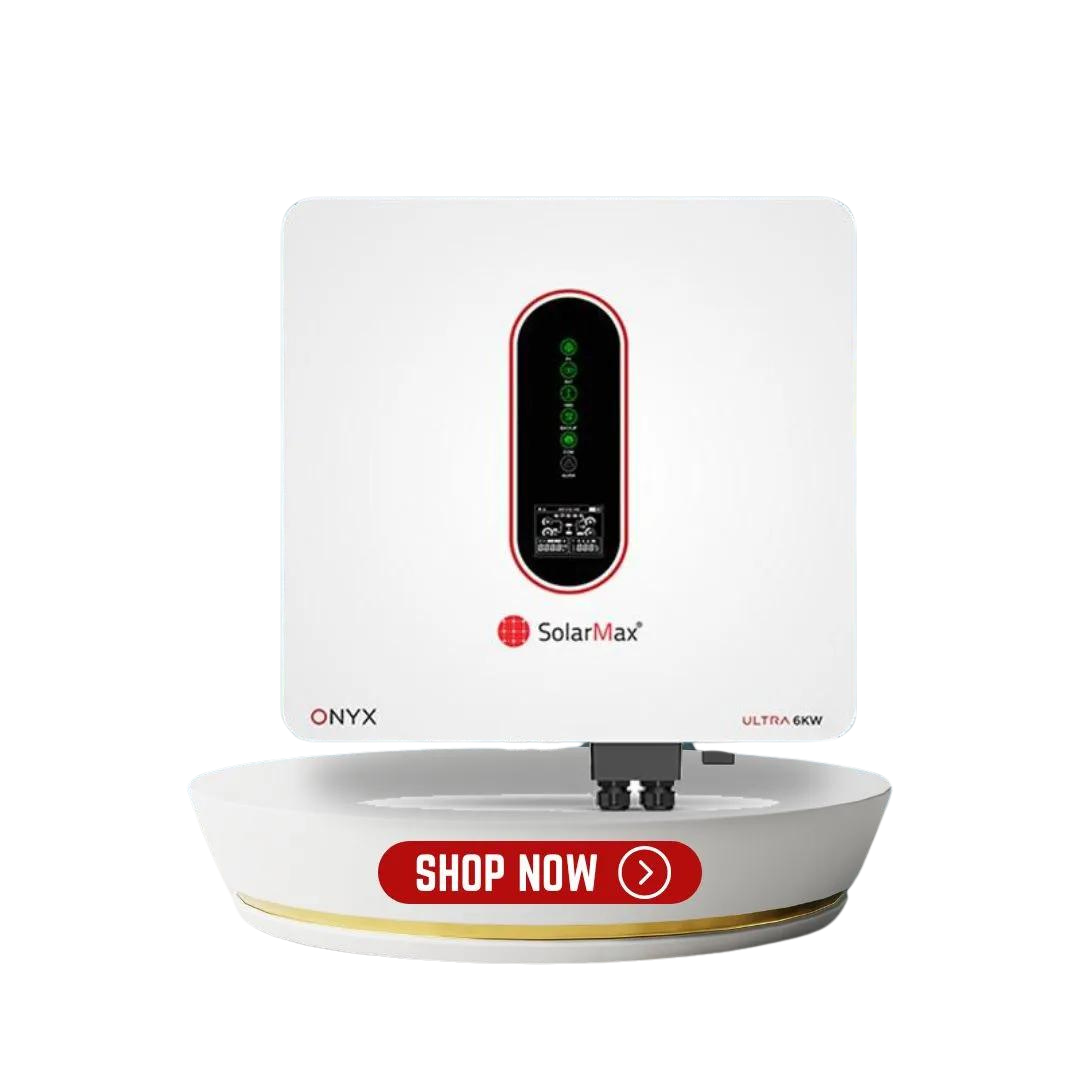
Knox Argon 4000 – 3kw Off Grid Inverter Price
Price - 115,000 ₨
A brief overview of solar inverters?
Solar inverters are crucial elements of solar energy systems. People primarily regard them as the intellectual driving force of a project. The solar panel inverter is beneficial for transforming direct current into alternating power.
What is the solar inverter?
An electrical converter known as a solar inverter converts the solar panel’s erratic direct current (DC) output into alternating current (AC). This current can serve multiple purposes, whether in a fully operational electrical grid or an off-grid electrical network. When installing a solar energy system for a home, the inverter is a critical component that must be carefully considered and installed. The inverter is a device that transforms the energy that solar panels generate into power that homes and businesses can use.
What is the function of a solar inverter?
It works by transforming the variable DC current from the solar panels into a constant AC voltage of 120 or 240 volts. Alternating current, not direct current, powers most common home appliances. This is why solar panels need a converter for the DC power they produce. The sun illuminates the crystalline silicon semiconductor layers that make up your solar panels, also known as photovoltaic cells. A junction connects the layers that make up the positive and negative layers.
The photovoltaic cells receive energy from the sun through the layers that collect light. The circulation of energy causes electrons to dissipate. The movement of electrons between the positive and negative layers generates direct current, or electrical current. You either immediately send the generated power to an inverter or store it in a battery for later use. Your solar panel inverter equipment is the deciding factor.
The inverter’s energy source is typically direct current. Alternating current is required for your home. The inverter converts direct current into alternating current by capturing energy and sending it through a transformer. Two or more transistors, which are fast-switching in the inverter, transmit direct current to the transformer’s two alternating sides.
What Functions Do Solar Inverters Perform?
As said before, PV inverters are like the central processing units of a solar power system. All things considered, the system’s overall functionality is dependent on the solar inverters. The following are some of the most important functions of solar inverters.
1. Make DC to AC Conversion
An inverter for solar panels essentially helps with this by converting the energy from the panels into a form that homes and businesses can use.
2. Maximize your power output
In order to determine the best power output from the modules, solar inverters continuously check the array voltage. The inverters could mistakenly identify the wrong string peak if the modules are damaged or if external factors cause shadowing. This reduces the system’s total energy output.
3. Connecting to the grid
In order to improve their grid-supporting capabilities, smart inverters have recently upgraded from a one-way connection to a two-way one. Thanks to their complex software, smart inverters are able to carry out a variety of grid-supportive tasks involving communication, voltage, frequency, and controls.
The ability to withstand relatively small disturbances, like voltage swings, is one of the characteristics of grid assistance. In the event of a voltage fluctuation, a smart inverter can go into standby mode, measure how long the disturbance lasts, and turn off if it persists.
4. Power Generation Report
Solar inverters allow you to keep track of how much power your solar system is producing. Modern inverters come with built-in networking capabilities like Wi-Fi, hardware Ethernet, or Bluetooth. Through dedicated desktop or mobile applications, their solution provides inverter diagnostics, power reduction statistics, and error codes.
5. Ensure that the system runs safely
Electric arcs can form as a result of material degradation and system age; in such a case, solar inverters must shut down. Although these arcs are intended to be detected by inverters, studies have shown that not all inverters perform adequately when asked to do so.
Solar Inverter Types
There are five main types of solar panel inverters: micro-inverters, power inverters, string inverters, central inverters, and hybrid inverters. Here are the five categories that have been defined:
Strings Inverters
In the US, they are the most cost-effective options for inverters. Solar installation companies traditionally offered string inverter systems for homes with a single-direction roof and little shading throughout the day.
The inverters are now applicable to a wider variety of uses, thanks to recent innovations from top string inverter manufacturers. Strings link the panels in groups, which is why they are named. By connecting many string connections to a single inverter, we can transform the direct current electricity from the panels into useful power for appliances.
Power Inverters
They are a type of power electronics that operate at the module level and typically provide benefits that micro-inverters do, but at a lower price. At each panel, you’ll find the inverters. The optimizers route the DC power to a string inverter after conditioning it, rather than converting it at the panel location to AC. When it comes to roof shading, their panel-level optimization outperforms string inverters in terms of system efficiency.
Micro-Inverters
You can attach these to each and every panel in a solar energy system. On your roof, they transform the DC power from your solar cells into AC power without the need for a separate centralized inverter. Most of the time, professionals will attach them to the solar panels’ backside. It is possible to track how well each solar panel is doing using micro-inverters, which are similar to power optimizer inverters.
If you want to add a battery to your solar system or want to keep the battery and solar panels apart while still using an inverter, a battery inverter is the way to go. Instead of drawing power from the grid, a battery inverter may convert the voltage from your batteries to 230V AC and send it to your switchboard.
Central Inverters
Systems requiring hundreds of kilowatts, or even megawatts, of capacity often employ a large central inverter. They look like large metal cabinets and can handle about 500 kW of power separately; they are not for home use. Large-scale installations or solar farms serving public utilities are typically used commercially.
Hybrid inverters
Also known as “multi-mode inverters,” enable the connection of batteries to solar systems, although their prevalence in Pakistan is relatively low. The ‘DC coupling’ between the solar panels and batteries allows the DC output from the panels to charge the batteries through a DC charger, and the electronics in the device control the charging and discharging of the batteries.
How can I find a reliable solar inverter?
Finding high-quality solar inverters requires careful consideration of a number of criteria when comparing different inverter brands, designs, and sizes. They consist of:
Has the solar inverter been certified by Government?
What size solar inverter is best?
Many people find this question perplexing. Choosing an inverter that can handle the highest power output of a solar power system is crucial for achieving the best performance. It takes 3 kW solar panels plus an equally powerful 3 kW solar inverter to create a 3 kW solar power system.
We will not delve into the exceedingly confusing exceptions to this rule. Check that the solar panels’ output is at least equal to, if not greater than, the inverter’s kilowatt rating.
Is the solar inverter weatherproof?
This is a significant factor to consider while determining the location of your inverter. If it is weatherproof, this provides greater freedom in location; however, if it is not, you may need to consider acquiring a weatherproof enclosure for protection, which will incur additional costs. The overarching principle is that increased solar inverter protection correlates with improved longevity and performance. Examine the specifications of the solar inverters of interest, and consult with the solar installation firm about the inverter’s intended installation location.
The solar inverter display
Examine the solar inverter display to determine the extent of information accessible immediately on the inverter or if a remote monitoring option is available. The display may contain the following information:
- The total hours of power generation by the system
- The current power output of the system in kilowatts (kW)
- The daily energy production of the system in kilowatt hours
- The cumulative electricity production of the system in kilowatt hours since installation
Remote solutions are available for mobile devices and PCs; hence, your choice depends on your budget and display needs.
Guarantee on solar inverter
There is a convincing expectation that grid-connected inverters would survive at least 10 years, and the typical lifespan is around 10 to 20 years. Inverters usually come with a warranty that lasts anywhere from five to twelve years, and you can get an extra extension for a little more money. Think about if you really need a longer warranty beyond the basic one, and take a close look at the features and specs of the inverter you’re interested in.
Am I able to add on to my solar inverter?
If you plan on expanding your solar system down the road, this is something to consider. Given the wide variety of factors that could affect your needs, it’s wise to seek the advice of a solar electrician.
Will you have access to the grid?
Before connecting to the grid, ensure that solar inverters have a minimum efficiency of 95% for models without transformers and 93% for models with them.
Solar Inverters Benefits
The following is a list of the primary advantages of solar inverters.
- Solar power mitigates both greenhouse gas emissions and extreme weather.
- Using solar-powered appliances can help you save money by lowering your power bills.
- One reliable way to harness solar power is with an inverter, which changes DC electricity to AC current.
- These inverters are excellent for small businesses since they reduce energy consumption.
- These devices serve multiple purposes; for example, they can help large energy users by converting DC to AC.
- Compared to generators, they are easier to install and less expensive.
- Regular maintenance is all you need to keep them running properly.
Disadvantages of solar inverters
- Purchasing these inverters can be quite pricey.
- Producing enough power requires a significant amount of sunshine.
- Installation necessitates ample space.
- In order to provide sufficient electricity to homes and businesses during nighttime operations, a battery is necessary.
How long a solar inverter will last?
Solar inverters typically have a lifespan of 10–20 years.
Can solar panels generate DC or AC power?
Solar panels produce direct current.
Is a battery necessary to use a solar panel?
No, battery is not necessary to use a solar panel but you can them for backup purpose.
What is the best way was to clean solar panels?
A bucket of soapy water and a hose are the best tools for cleaning solar panels. Click here to read a comprehensive guide on how to clean solar panels.
Can a solar power system be complete without a solar inverter?
Solar inverters are essential for converting solar panels’ DC power into AC power suitable for home appliances use.
Do I need a professional to install solar inverters?
If you want your solar inverter to work properly, you should have a skilled installer to install it.
In Pakistan, how long is the warranty period for solar inverters?
Solar inverters from well-known brands in Pakistan often come with 5- to 10-year warranties.





